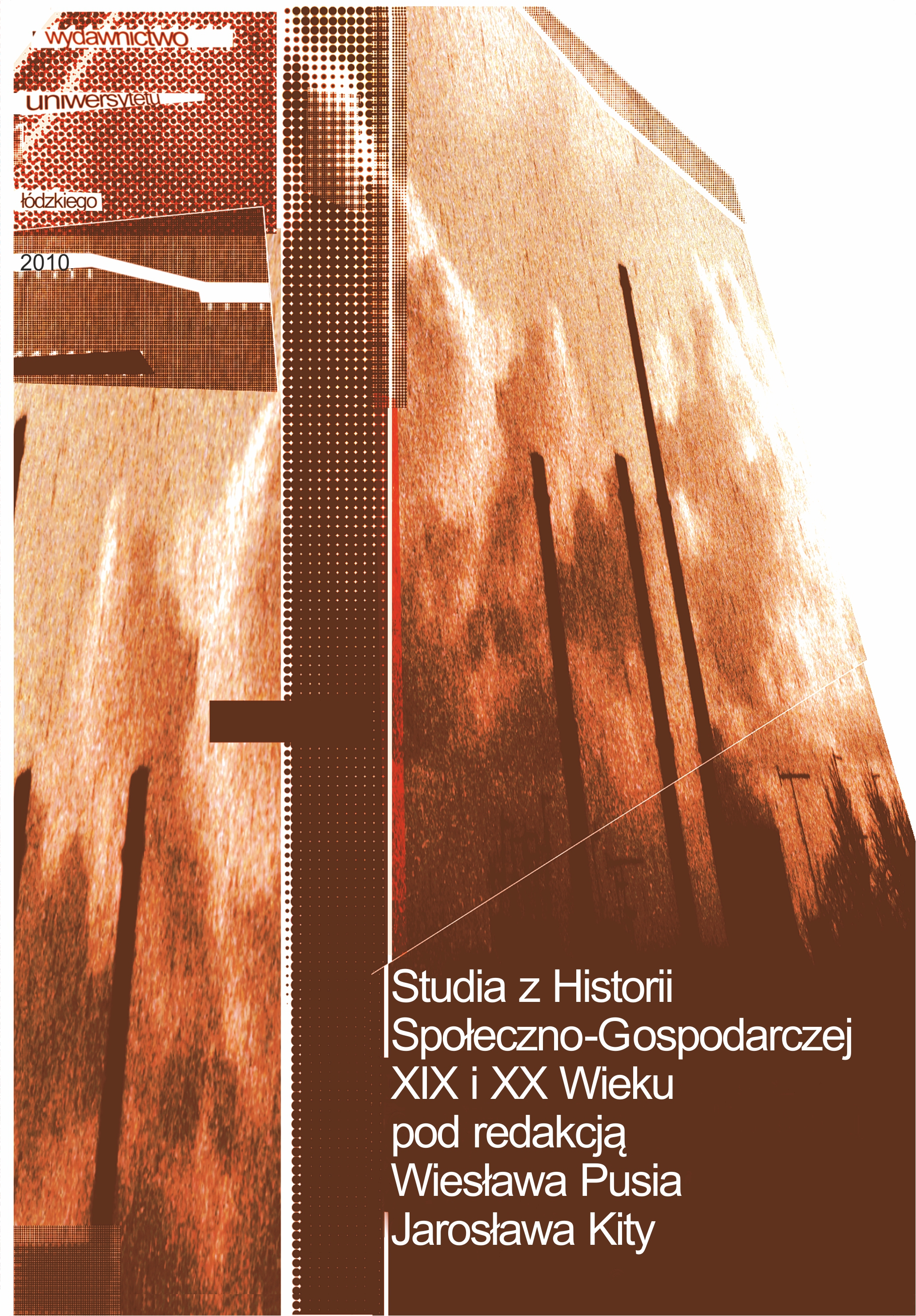Działalność przemysłowa Ignacego Kotkowskiego w Dołach Biskupich w drugiej połowie XIX wieku
DOI:
https://doi.org/10.18778/2080-8313.08.17Abstrakt
Ignacy Leon Kotkowski – a landowner, industrialist, grandfather of Witold Gombrowicz, married to Aniela Kotkowska from the Kotkowski family – bought in 1838 from the Małachowski family the village of Bodzechów together with the manor house and over 1400 acres of fertile lands, woods and meadows. On these lands he built very profitable ironworks with a puddling furnace, a paper mill, a brickyard, a lumber mill, mills and a nailery.
In 1885 the squire of the estate of Bodzechów and Małoszyce, Ignacy Kotkowski, purchased in the neighbouring village of Doły Biskupie a brick mill, as well as the nearby lands. The village of Doły Biskupie situated at the Świślina River abounded in rich stone deposits (dolomite). Therefore he established an enterprise there called “Ignacy Kotkowski’s ‘Doły and Święcie’ Sandstone Mines, Factory of Stone Products”. He built three state-of-the-art water mills on the Świślina River. Banked up waters of the river enclosed in the built by Kotkowski channels powered the mills’ wheels. Sandstone was extracted with the use of modern technologies. Cutting of stone took place in three lumber mills. Huge marble slabs were transported by a narrow-gauge railway. Apart from extracting the sandstone, it was machined, and many products were manufactured from it, for instance: carved windows, doors, tower ornaments, cornices, balconies, staircases, floors, entrance gates, tables and others. Mills, the factory of stone products, sandstone mines together with the nearby factory housing estate, constitued the property, which was entered in the records as “Doły” Mill Settlement.
The development of the factory rewuired constant investments, i.e. building of the subsequent buildings which were intended for workshops, or flats for managers and workers. Efficient transport, in turn, required bulding of a road that would connect the factory with the iron railway, as well as bridges on ravines and the channel leading to the factory in Nietulisk. The speedy development of the factory provided employment and wages to a considerable number of inhabitants. Ignacy Kotkowski died in 1901. In 1902 the estate of “Doły” Mill Settlement became the property of his daughter, Marcelina Antonina Gombrowiczowa, née Kotkowska.
The Doły Biskupie settlement is the proof of utilizing the waters of the Świślina River for almost 400 years in one and the same place. In te course of those years water systems, which set in motion respectively the mill, industrial mills, the stone factory, as well as the carboard factory, have been perfected. Such a long and coherent industrial tradition was possible thanks to Ignacy Kotkowski’s ability to use the local raw materials and natural sources of energy. The history of this town as well as the industried activity of one landowning family shows the difficult process of industrialization of our country. The invasions, wars, crises, or floods forced entrepreneurs to react quickly to the changing economic situation, to market needs, and required resistance and determination. Cataclysms would ruin any new investment. That is why plants were rebuilt so often, and the range of products would change.
Pobrania
Opublikowane
Jak cytować
Numer
Dział
Licencja

Utwór dostępny jest na licencji Creative Commons Uznanie autorstwa – Użycie niekomercyjne – Bez utworów zależnych 4.0 Międzynarodowe.









